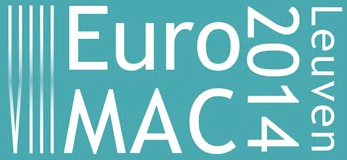New Forms of Representation to Listen, Analyze, and Create Electroacoustic Music
- On 15 août 2014
 During the next European Music Analysis Conference, I will present a paper on link between listening, analysis, and creation. This paper is included in Listening to electroacoustic music through analysis session.
During the next European Music Analysis Conference, I will present a paper on link between listening, analysis, and creation. This paper is included in Listening to electroacoustic music through analysis session.
Abstract
Analysis uses representation to detect and demonstrate paradigmatic or syntagmatic links in musical material. For several years, the particular case of electroacoustic music adds new digital technics to create complex and interactive representations. These representations show potential links between analysing, modeling, and creating electroacoustic music. Indeed, EAnalysis[1] and TIAALS[2] software explore interactive representations through charts of typology, paradigmatic links, or any other organizations of sound and music that break traditional time/frequency graphic representations. They also show the possibility to associate various types of files like audio, video, or data from other software. Features of these software allow the listener to navigate inside the work in different ways and are closely to creative processes. In the other side, software developed for musical creation can be used in analysis. Last versions of Audiosculpt[3] software gives the possibility to use audio descriptor or similarity matrix. Audio descriptors are used for several years to analyze large bank of sounds (MIR) and detect regularities or extract various acoustical characteristics. Audio descriptors can be used in musical analysis to discover and analyze global morphologies, breaks of spectrum, regularities, transitions, or articulations of sound material. Similarity matrix is perfect to visualize musical form from sonogram and links between different levels of structures. The piece of software CataRT[4] uses audio descriptors to create playing map of sounds for musical improvisation. This map can focus on audio descriptors without time representation to create a sort of genetic map of any audio file.
These examples of software from both sides demonstrate how links between analysis and musical creation are strong in recent electroacoustic music researches. This paper will present these technologies based on musical representations through different examples of creative processes and analysis of electroacoustic music.
[1] EAnalysis is a free software for musical analysis developed by Pierre Couprie at De Montfort University (Leicester).
[2] TIAALS is a free software for musical analysis developed by Michael Clarke, Frédéric Dufeu and Peter Manning at Huddersfield University.
[3] Audiosculpt is an analysis/synthesis software developed at Ircam (Paris).
[4] CataRT is a free concatenative synthesis software developed by Diemo Schwartz at Ircam (Paris).

0 Commentaires